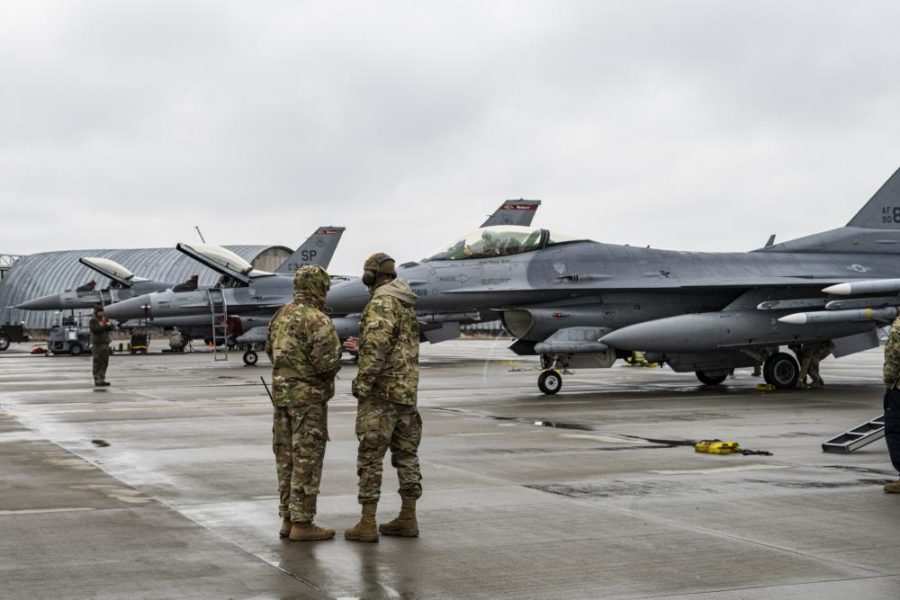Russia’s invasion of Ukraine has reignited talks about more permanent U.S. bases and troops in Europe, especially in the eastern portion of the continent where allies and partners are clamoring for it to counter Russia’s influence.
On April 5, the Pentagon’s top general endorsed that push—with a slight twist.
Chairman of the Joint Chiefs of Staff Gen. Mark A. Milley, testifying to the House Armed Services Committee, noted that Europe is facing a potentially pivotal moment in its history given Russia’s aggression, and said that “as a general rule of thumb,” U.S. presence in a region is a good deterrent.
In that regard, Milley echoed comments made by U.S. European Command boss USAF Gen. Tod D. Wolters, who told Congress a week ago that after European nations adjusted their own contributions to defense across the continent, the U.S. would do the same, and “my suspicion is we’re going to still need more.”
But while Wolters declined to say whether he thought that increased presence should be permanent or rotational, Milley said it should be a little of both.
“My advice would be to create permanent bases, but don’t permanently station. So you get the effect of permanence by rotational forces cycling through permanent bases,” Milley told Ranking Member Rep. Mike Rogers (R-Ala.) “And what you don’t have to do is incur the cost of family moves, PXs, schools, housing, and that sort of thing. So you cycle through expeditionary forces through forward deployed permanent bases.”
Lawmakers and Milley both noted that several countries in Eastern Europe have even gone so far as to offer to build and pay for permanent bases for the U.S. to use, including Poland, Lithuania, and Romania.
“They’re very, very willing to establish permanent bases. They’ll build them, they’ll pay for them, etc., for us to cycle through on a rotational basis,” Milley said. “So you get the effect of permanent presence of forces, but the actual individual Soldier, Sailor, Airman, and Marine is not permanently stationed there for two or three years.”
Defense Secretary Lloyd J. Austin III, appearing alongside Milley, didn’t give any indication whether he supported Milley’s idea. Instead, he deferred any decisions about basing in Europe until after discussions with NATO.
“NATO is going through a process right now to really kind of assess how we expect the security architecture in the region is going to change for the foreseeable future or has changed for the foreseeable future,” Austin said. “… If NATO deems that it’s appropriate to change its footprint, then certainly we’ll be a part of that. Our goal is to make sure that we continue to reassure our allies and partners, especially those that are on the eastern flank, and especially our allies that are in the Baltic region.”
The U.S. presence in Europe has declined precipitously since 1991 and the end of the Cold War, with another noticeable decline as America became involved in conflicts in the Middle East. Until recently, there were around 60,000 troops on the continent, roughly a fifth of the presence in the 1980s and just shy of half of that in the late 1990s and early 2000s.
Recently, however, that figure has jumped to around 100,000 as troops have poured into the region, bolstering NATO’s eastern flank.
“I can’t think of a better signal that we could send to our allies and to Putin that we are committed to NATO than this basing issue,” Rogers said.
